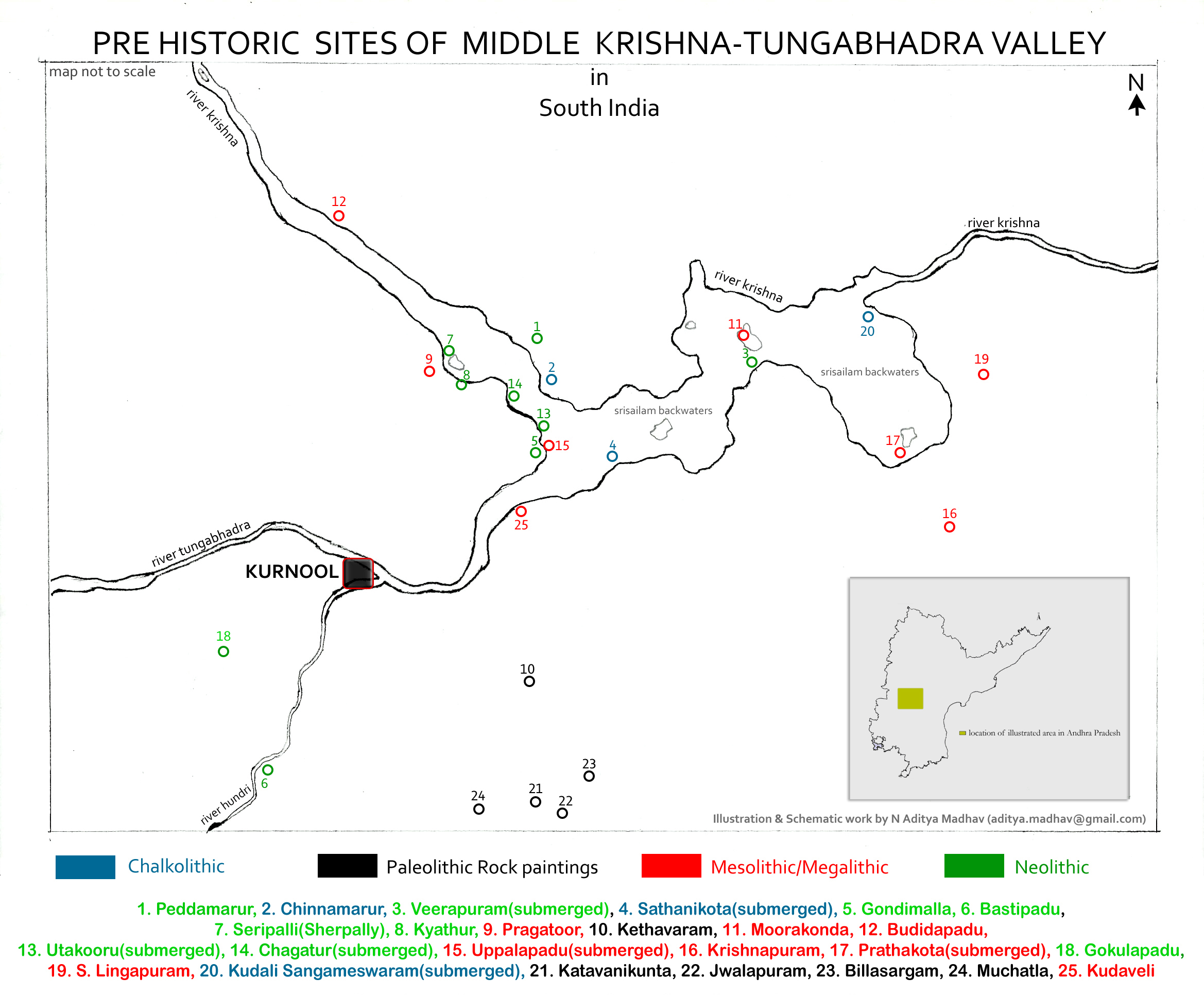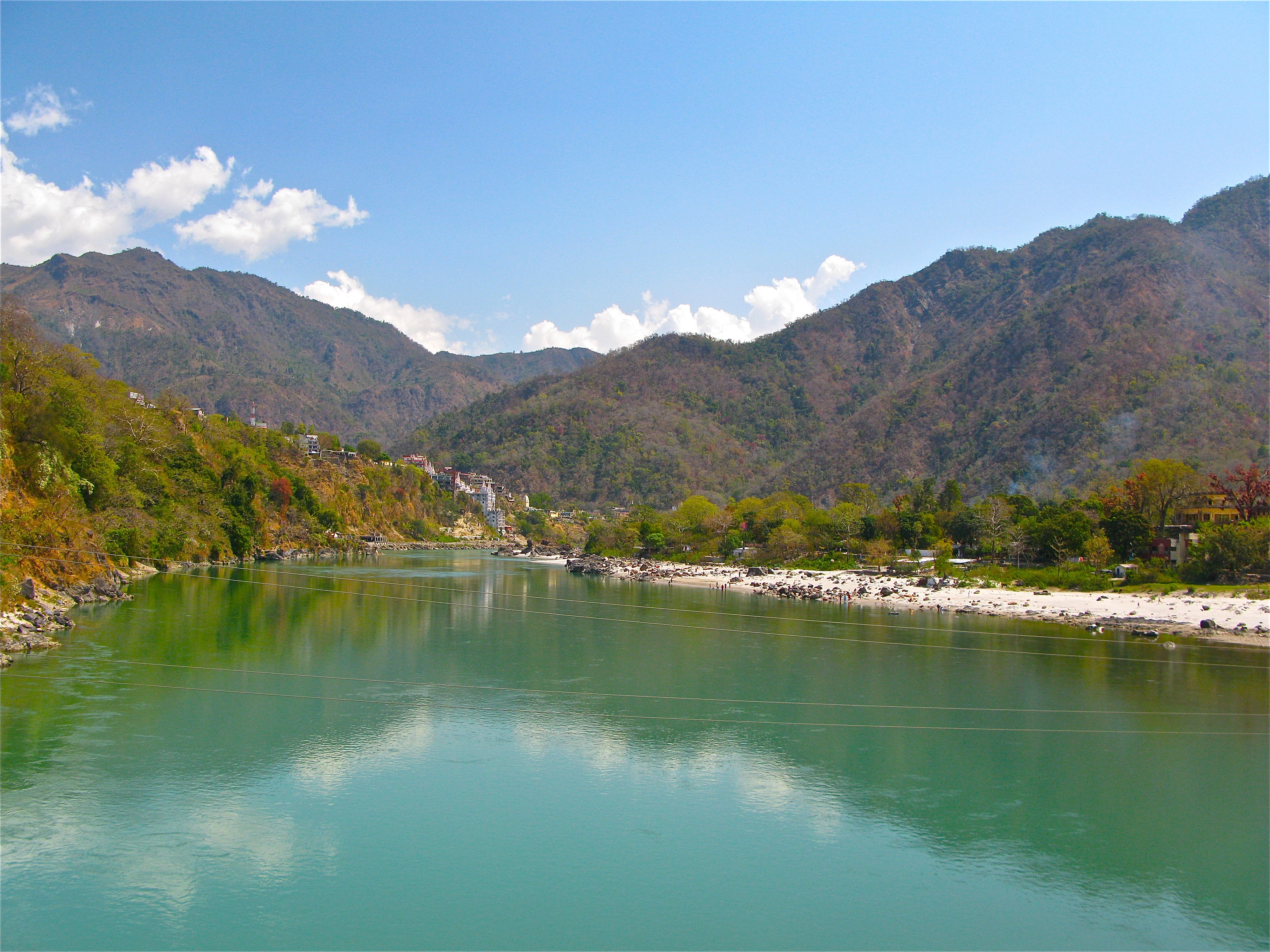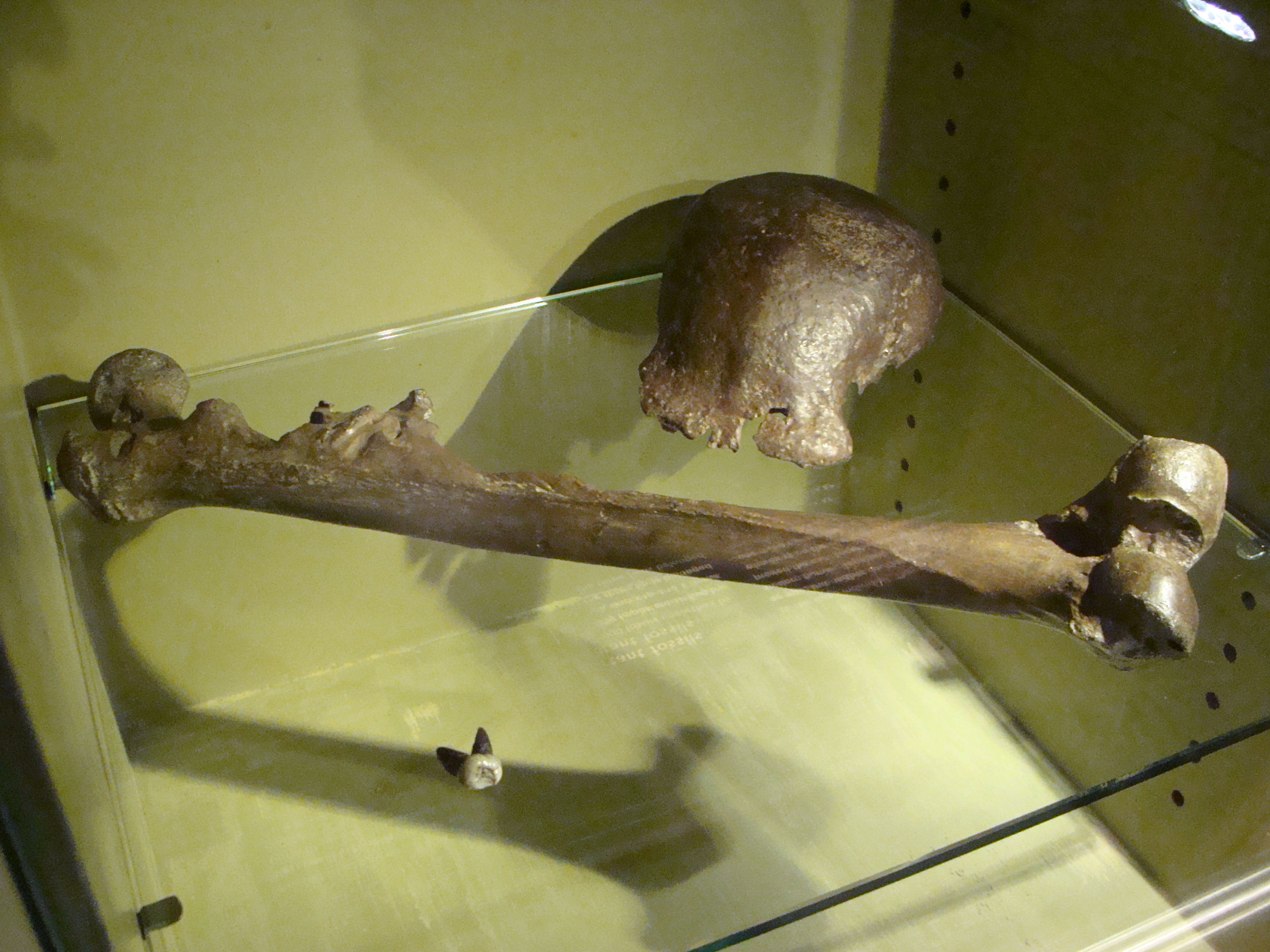|
Deccan Megalithic Cultures
The South Asian Stone Age covers the Palaeolithic, Mesolithic and Neolithic periods in South Asia. Evidence for the most ancient ''Homo sapiens'' in South Asia has been found in the cave sites of Cudappah of India, Batadombalena and Belilena in Sri Lanka. In Mehrgarh, in what is today western Pakistan, the Neolithic began c. 7000 BCE and lasted until 3300 BCE and the first beginnings of the Bronze Age. In South India, the Mesolithic lasted until 3000 BCE, and the Neolithic until 1400 BCE, followed by a Megalithic transitional period mostly skipping the Bronze Age. The Iron Age began roughly simultaneously in North and South India, around c. 1200 to 1000 BCE (Painted Grey Ware culture, Hallur, Paiyampalli). ''Homo erectus'' ''Homo erectus'' lived on the Pothohar Plateau, in upper Punjab, Pakistan along the Soan River (nearby modern-day Rawalpindi) during the Pleistocene Epoch. Soanian sites are found in the Sivalik region across what are now India, Pakistan and Nepal. Biface ... [...More Info...] [...Related Items...] OR: [Wikipedia] [Google] [Baidu] |
Palaeolithic
The Paleolithic or Palaeolithic (), also called the Old Stone Age (from Greek: παλαιός ''palaios'', "old" and λίθος ''lithos'', "stone"), is a period in human prehistory that is distinguished by the original development of stone tools, and which represents almost the entire period of human prehistoric technology. It extends from the earliest known use of stone tools by hominins, 3.3 million years ago, to the end of the Pleistocene, 11,650 cal BP. The Paleolithic Age in Europe preceded the Mesolithic Age, although the date of the transition varies geographically by several thousand years. During the Paleolithic Age, hominins grouped together in small societies such as bands and subsisted by gathering plants, fishing, and hunting or scavenging wild animals. The Paleolithic Age is characterized by the use of knapped stone tools, although at the time humans also used wood and bone tools. Other organic commodities were adapted for use as tools, includ ... [...More Info...] [...Related Items...] OR: [Wikipedia] [Google] [Baidu] |
Hallur
Hallur is an archaeological site located in the Haveri district (which was carved out of Dharwad district), in the Indian state of Karnataka.Kenneth A. R. Kennedy (2000), p272 Hallur, South India's earliest Iron Age site,Robert Bradnock (2000), p499 lies in a semi-arid region with scrub vegetation, located on the banks of the river Tungabhadra. The site is a small mound about 6.4 m high. Peter Neal Peregrine, Melvin Ember, Human Relations Area Files Inc. (2001), p368 The site was first discovered by Nagaraja Rao in 1962, and excavated in 1965. Further sampling was carried out in the late 1990s for the recovery of archaeobotanical evidence and new high precision radiocarbon dates Fuller, D.Q., Korisettar, R., Vankatasubbaiah, P.C., Jones, M.K. (2004). Early plant domestications in southern India: some preliminary archaeobotanical results. Vegetation History and Archaeobotany 13(2), 115-129Fuller, D.Q, Boivin, N. & Korisettar, R. (2007). Dating the Neolithic of South India: ... [...More Info...] [...Related Items...] OR: [Wikipedia] [Google] [Baidu] |
South Asian Stone Age
The South Asian Stone Age covers the Palaeolithic, Mesolithic and Neolithic periods in South Asia. Evidence for the most ancient ''Homo sapiens'' in South Asia has been found in the cave sites of Cudappah of India, Batadombalena and Belilena in Sri Lanka. In Mehrgarh, in what is today western Pakistan, the Neolithic began c. 7000 BCE and lasted until 3300 BCE and the first beginnings of the Bronze Age. In South India, the Mesolithic lasted until 3000 BCE, and the Neolithic until 1400 BCE, followed by a Megalithic transitional period mostly skipping the Bronze Age. The Iron Age began roughly simultaneously in North and South India, around c. 1200 to 1000 BCE (Painted Grey Ware culture, Hallur, Paiyampalli). ''Homo erectus'' ''Homo erectus'' lived on the Pothohar Plateau, in upper Punjab, Pakistan along the Soan River (nearby modern-day Rawalpindi) during the Pleistocene Epoch. Soanian sites are found in the Sivalik region across what are now India, Pakistan and Nepal. Biface ... [...More Info...] [...Related Items...] OR: [Wikipedia] [Google] [Baidu] |
Acheulian
Acheulean (; also Acheulian and Mode II), from the French ''acheuléen'' after the type site of Saint-Acheul, is an archaeological industry of stone tool manufacture characterized by the distinctive oval and pear-shaped "hand axes" associated with ''Homo erectus'' and derived species such as ''Homo heidelbergensis''. Acheulean tools were produced during the Lower Palaeolithic era across Africa and much of West Asia, South Asia, East Asia and Europe, and are typically found with ''Homo erectus'' remains. It is thought that Acheulean technologies first developed about 1.76 million years ago, derived from the more primitive Oldowan technology associated with ''Homo habilis''. The Acheulean includes at least the early part of the Middle Paleolithic. Its end is not well defined, depending on whether Sangoan (also known as "Epi-Acheulean") is included, it may be taken to last until as late as 130,000 years ago. In Europe and Western Asia, early Neanderthals adopted Acheulean tec ... [...More Info...] [...Related Items...] OR: [Wikipedia] [Google] [Baidu] |
Pleistocene
The Pleistocene ( , often referred to as the ''Ice age'') is the geological Epoch (geology), epoch that lasted from about 2,580,000 to 11,700 years ago, spanning the Earth's most recent period of repeated glaciations. Before a change was finally confirmed in 2009 by the International Union of Geological Sciences, the cutoff of the Pleistocene and the preceding Pliocene was regarded as being 1.806 million years Before Present (BP). Publications from earlier years may use either definition of the period. The end of the Pleistocene corresponds with the end of the last glacial period and also with the end of the Paleolithic age used in archaeology. The name is a combination of Ancient Greek grc, label=none, πλεῖστος, pleīstos, most and grc, label=none, καινός, kainós (latinized as ), 'new'. At the end of the preceding Pliocene, the previously isolated North and South American continents were joined by the Isthmus of Panama, causing Great American Interchang ... [...More Info...] [...Related Items...] OR: [Wikipedia] [Google] [Baidu] |
Sivalik Hills
The Sivalik Hills, also known as the Shivalik Hills and Churia Hills, are a mountain range of the outer Himalayas that stretches over about from the Indus River eastwards close to the Brahmaputra River, spanning the northern parts of the Indian subcontinent. It is wide with an average elevation of . Between the Teesta and Raidāk Rivers in Assam is a gap of about . "Sivalik" literally means 'tresses of Shiva'. Sivalik region is home to the Soanian archaeological culture. Geology Geologically, the Sivalik Hills belong to the Tertiary deposits of the outer Himalayas. They are chiefly composed of sandstone and conglomerate rock formations, which are the solidified detritus of the Himalayas to their north; they are poorly consolidated. The remnant magnetisation of siltstones and sandstones indicates that they were deposited 16–5.2 million years ago. In Nepal, the Karnali River exposes the oldest part of the Shivalik Hills. They are bounded on the south by a fault syst ... [...More Info...] [...Related Items...] OR: [Wikipedia] [Google] [Baidu] |
Pleistocene Epoch
The Pleistocene ( , often referred to as the ''Ice age'') is the geological epoch that lasted from about 2,580,000 to 11,700 years ago, spanning the Earth's most recent period of repeated glaciations. Before a change was finally confirmed in 2009 by the International Union of Geological Sciences, the cutoff of the Pleistocene and the preceding Pliocene was regarded as being 1.806 million years Before Present (BP). Publications from earlier years may use either definition of the period. The end of the Pleistocene corresponds with the end of the last glacial period and also with the end of the Paleolithic age used in archaeology. The name is a combination of Ancient Greek grc, label=none, πλεῖστος, pleīstos, most and grc, label=none, καινός, kainós (latinized as ), 'new'. At the end of the preceding Pliocene, the previously isolated North and South American continents were joined by the Isthmus of Panama, causing a faunal interchange between the two r ... [...More Info...] [...Related Items...] OR: [Wikipedia] [Google] [Baidu] |
Rawalpindi
Rawalpindi ( or ; Urdu, ) is a city in the Punjab province of Pakistan. It is the fourth largest city in Pakistan after Karachi, Lahore and Faisalabad, and third largest in Punjab after Lahore and Faisalabad. Rawalpindi is next to Pakistan's capital Islamabad, and the two are jointly known as the "twin cities" because of the social and economic links between them. Rawalpindi is on the Pothohar Plateau, known for its ancient Hindu and Buddhist heritage, especially in the neighbouring town of Taxila, a UNESCO World Heritage Site. In 1765, the ruling Gakhars were defeated and the city came under Sikh rule, becoming an important city within the Sikh Empire based at Lahore. The city's ''Babu Mohallah'' neighbourhood was once home to a community of Jewish traders that had fled Mashhad, Persia, in the 1830s. The city was conquered by the British Raj in 1849, and in the late 19th century became the largest garrison town of the British Indian Army's Northern command as its climate ... [...More Info...] [...Related Items...] OR: [Wikipedia] [Google] [Baidu] |
Soan River
The Soan River ( ur, ), also referred to as the Swan, Sawan, or Sohan, is a river in Punjab (Pakistan), Punjab, Pakistan. Location and geography The Soan River is a stream in the Pothohar Plateau, Pothohar or North Punjab region of Pakistan, and drains much of the water of Pothohar. It starts near the small village of Bun in the foothills of Patriata and Murree and provides water to the Simly Dam, which is a water reservoir for Islamabad. Near Pharwala Fort, it cuts through a high mountain range at a location called Soan Cut. As streams do not typically form across mountains of this height, it is likely that the Soan was there before the formation of this range. Ling stream, following a relatively long course through Lehtrar and Kahuta, joins the Soan near Sihala on the southern side of Village Gagri. The Islamabad Highway crosses this stream near Sihala at the Kak Pul bridge. The Ling Stream joins the Soan river just before the Kak Pul. Two other streams, the Korang River and ... [...More Info...] [...Related Items...] OR: [Wikipedia] [Google] [Baidu] |
Punjab (Pakistan)
Punjab (; , ) is one of the four provinces of Pakistan. Located in central-eastern region of the country, Punjab is the second-largest province of Pakistan by land area and the largest province by population. It shares land borders with the Pakistani provinces of Khyber Pakhtunkhwa to the north-west, Balochistan to the south-west and Sindh to the south, as well as Islamabad Capital Territory to the north-west and Autonomous Territory of AJK to the north. It shares an International border with the Indian states of Rajasthan and Punjab to the east and Indian-administered Kashmir to the north-east. Punjab is the most fertile province of the country as River Indus and its four major tributaries Ravi, Jhelum, Chenab and Sutlej flow through it. The province forms the bulk of the transnational Punjab region, now divided among Pakistan and India. The provincial capital is Lahore — a cultural, modern, historical, economic, and cosmopolitan centre of Pakistan. Other major cities ... [...More Info...] [...Related Items...] OR: [Wikipedia] [Google] [Baidu] |
Pothohar Plateau
The Pothohar Plateau ( ur, ) is a plateau in north-eastern Pakistan, located between Indus River and the Jhelum River, forming the northern part of Punjab. Geography Potohar Plateau is bounded on the east by the Jhelum River, on the west by the Indus River, on the north by the Kala Chitta Range and the Margalla Hills, and on the south by the Salt Range. The southern end of the plateau is bounded by the Thal desert. The 5000 square miles of the plateau range from an average height of 1200 to 1900 feet above the sea level. Sakesar in the Salt Range is the highest mountain of the region and Tilla Jogian is the second highest. The Sivapithecus indicus fossil skull of an extinct ape species was discovered in Potohar plateau. Economy The plateau covers about 7 percent of all the cultivated land of Pakistan and most of it is very fertile, but the region does not have any proper irrigation system, with the agriculture being largely dependent on rainfall. The plateau is the locatio ... [...More Info...] [...Related Items...] OR: [Wikipedia] [Google] [Baidu] |
Homo Erectus
''Homo erectus'' (; meaning "upright man") is an extinct species of archaic human from the Pleistocene, with its earliest occurrence about 2 million years ago. Several human species, such as '' H. heidelbergensis'' and '' H. antecessor'' — with the former generally considered to have been the ancestor to Neanderthals, Denisovans, and modern humans — appear to have evolved from ''H. erectus''. Its specimens are among the first recognizable members of the genus ''Homo''. ''H. erectus'' was the first human ancestor to spread throughout Eurasia, with a continental range extending from the Iberian Peninsula to Java. Asian populations of ''H. erectus'' may be ancestral to '' H. floresiensis'' and possibly to '' H. luzonensis''. The last known population of ''H. erectus'' is '' H. e. soloensis'' from Java, around 117,000–108,000 years ago. ''H. erectus'' had a more modern gait and body proportions, and was the first human species to ... [...More Info...] [...Related Items...] OR: [Wikipedia] [Google] [Baidu] |










